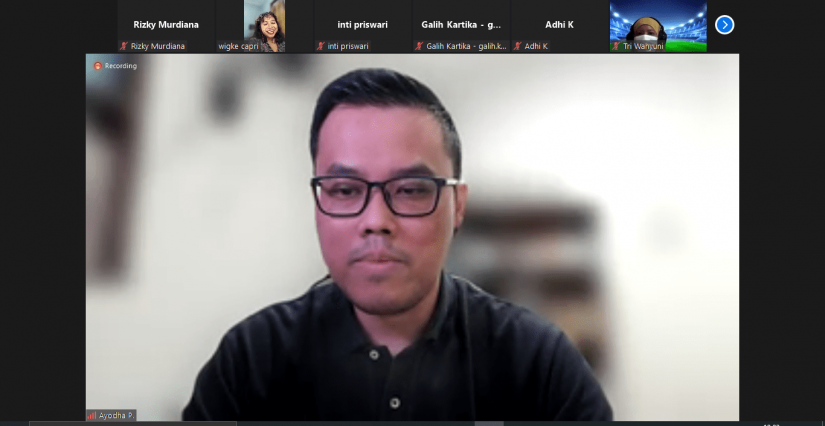
“Regardless of profession and career background, it’s good for us to know and have the skills to make policy briefs, because these skills can help the process of conveying ideas effectively,” Ayodha said, in the event moderated by Wigke Capri, a Lecturer of DPP UGM, and attended by 45 participant.
In this case, the webinar can facilitate training in writing strategic policy briefs and can get the attention of the intended audience.
Before writing a policy brief, there are several aspects that need to be considered, including starting the question why we write a policy brief, then how do we write down the existing ideas, and finally what is the goal we want to achieve from the policy brief. These questions can guide the writing process that starts from individual empathy and produces well-structured writing.
A policy brief is a document that is written briefly, to the point, free of jargon and includes a call for action as a follow-up recommendation. In its writing, policy briefs are articles with an audience-driven focus, and the context of its use serves as an advocacy tool that influences policy agenda setting.
In terms of writing structure, the average policy brief is written in 1-5 pages, starting from an interesting title that encourages emotion to read further, then an executive summary in the form of a very short description of the main points, followed by a description of the problem that explains the issues. whatever it is hoped to solve. Entering the fourth part, the structure written is a review of the current policy options, policy recommendations, and finally the appendix.
After explaining the tips for writing a policy brief, the resource persons continued to share material on the process of delivering a policy brief. This process is one of the most important steps, because no matter how good a policy brief, it cannot be considered successful if it has not been accepted by the intended audience. At this stage, Ayodha said that the effectiveness of delivering information was the most important thing, thus conveying the main message and urgency of the written policy brief.
“Create notes, practice makes perfect, and just do it,” Ayodha said while at the same time ending the public lecture that afternoon.
